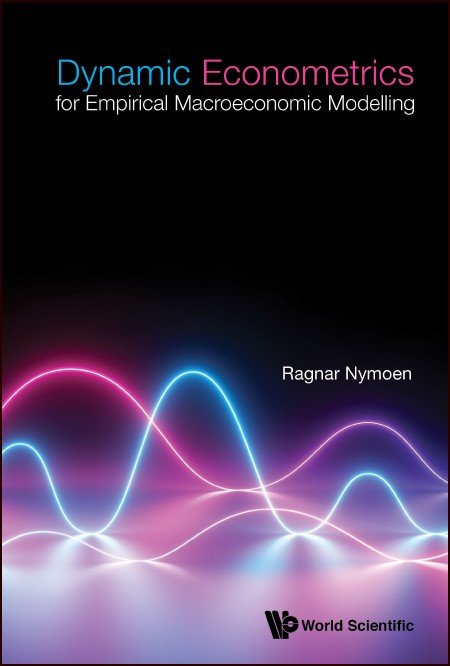This page contains data sets , extra exercises and corrections to the book Dynamic Econometrics for Empirical Macroeconomic Modelling .
The book, was published by World Scientific in July 2019. It is a textbook for Masters and PhD students in Economics. About the book:
- A concise presentation on the mathematics of difference equations and how it is used in dynamic econometric modelling
- Methods for non-stationary and co-integrated variables
- Structured chapters on automatic methods for variable selection and forecasting with empirical macroeconometric models
- Complete with end-of-chapter exercises and solutions
In the textbook, the duality between the equilibrium concept used in dynamic economic theory and the stationarity of economic variables is explained and used in the presentation of single equations models and system of equations such as VARs, recursive models and simultaneous equations models.
The book also contains chapters on: exogeneity, in the context of estimation, policy analysis and forecasting; automatic (computer based) variable selection, and how it can aid in the specification of an empirical macroeconomic model; and finally, on a common framework for model-based economic forecasting.
The book is available from the publishers’s webpage (hardcover and e-book (Kindle)), as well from good booksellers, for example: Amazon Kobo and Akademika.
This web-page contains links to data sets for the computer exercises Solution suggetions to those exercises, as well as to the theoretical ones are included in Appendix C of the book.
Data sets
All linked data files are compressed files and therefore have extension zip. They contain data sets, some times in more than one file format (eg PcGive data bank (also easy to use in Eviews), Stata, and Microsoft Excel). Extract the contents after download of the zipped files and use the desired file format.
The data sets are referred both in the main text and in the practical exercises.
Chapter 1: dgp_determandstoch (cobweb model series), Fulton (New York fish market data)
Chapter 2: NORPCMa (Norwegian inflation and unemployment, estimation of natural rate)
Chapter 3: SimdataAR2 (code to generate 2nd order dynamics)
Chapter 4: Fulton (New York fish market data)
Chapter 5: dgp_determandstoch (cobweb model series), Fulton (New York fish market data)
Chapter 6: NORPCMb (Norwegian inflation and unemployment, ADL), RLandRNB_final_modelCH6 (code for interest rate transmission model in Ch. 4.8), NAMdataMay17 (data set for interest rate transmisson)
Chapter 7: pcnaive_VARbyCond_d (VAR-EX series) , SEMbias_data (simultaneous equations bias), Fulton (New York fish market data)
Chapter 8: NORPCMb
Chapter 9: Simdata_trend_RW (generated non-stationary series)
Chapter 10: ECM-test_SpuriousADLmodel (data for ECM and trace tests of no relationship), weakly_cointegrated_ADLmodel_d (data for CVAR)
Chapter 11: DGPisNullModel_Zvariables_are_correlated_d , DGPisADL_Zvariables_are_correlated_d , NAMdataMay17
R code
In the book, the practical examples and exercises mainly refer to OxMetrics software programs PcGive and PcNaive (for Monte Carlo simulation), but also Eviews. Examples of code in R can be found by following these links:
Exercise 1.7: FultonCH1.zip
Chapter 6.7 (ADL model of interest rate transmission): RLandRNBCH6.zip
The files are in zip format, but they only contain a single R-code file each.

